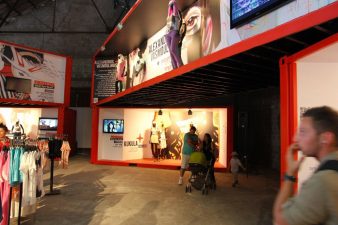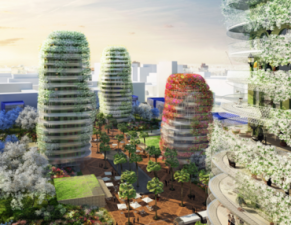 What is a friendlier urban environment – dense constructed areas dotted with large, open public areas, or a slightly less dense urban environment infused with nature?
What is a friendlier urban environment – dense constructed areas dotted with large, open public areas, or a slightly less dense urban environment infused with nature?
Living in a city is better for the environment than living in the suburbs. Denser living allows for a lower carbon footprint since people can walk (or bike commute) to work, shop locally, and live a car-free, energy-reduced lifestyle. Some would argue that the denser, the better, since more people can share resources and reduce commuting that way. But even hardcore urbanites want a little green in their lives. (Just think of all those diehard Manhattan residents piled on top of each other in high-rise apartments and their luscious Central Park.)
Israeli urban planners and environmentalists are currently disagreeing on the best way for a city to be green, after an annual convention of the Israeli Association of Landscape Architects.
A high percentage of the Israeli population lives in urban environments, and so great emphasis is placed on designing communal and open spaces in cities. The Housing and Construction Ministry has even designated that 5 square meters of open space should be allocated per person in the cities. (Dubai, on the other hand, has roughly 13 square meters of green space per capita and hopes to offer every resident 25 square meters of green space by 2020.)
No one is arguing that open space is important – urban living can feel a little suffocating without it. But a paper presented at last week’s conference argued that it is not about the amount of meters of open space allocated per person, but rather their quality. It’s quality, not quantity, that’s important.
This idea was presented by Dr. Yodan Rofe, an architect and urban planner, who studied open spaces in various parts of Israel. His study showed that most urban residential neighborhoods have plenty of open space, but very little quality open space.
He also found that people prefer to stroll along city streets rather than spend time in public gardens, suggesting that it may make more sense to invest more energy in green-ifying and improving the quality of city streets. “As a rule,” Rofe says, “public spaces should be developed as an entirety of streets, square and gardens.”
The Society for the Protection of Nature (SPNI) and the Israel Union for Environmental Defense (Adam Teva v’Din) disagree with Rofe, though, and believe that there is not enough open space in today’s urban environments. They would also promote urban planning that is based on local diversity, with space set aside for regional flora and fauna.
Tel Aviv’s urban plan may be a compromise between these two philosophies. Deputy Mayor Meital Lehavi is currently working to promote a comprehensive urban plan of green veins that connect the city. These green axes would include the existing street infrastructure, bicycle lanes, natural greenery and trees and connect parks and gardens.
: Haaretz
Read more about the eco-advantages of urban living::
Should Cities in the Middle East Be More Dense, Like Manhattan?
The Compact City As Sustainable Urban Form Can Reduce Air Pollution
Sustainability in the City (of Tel Aviv), To Celebrate 100 Years Now and 100 in the Future



